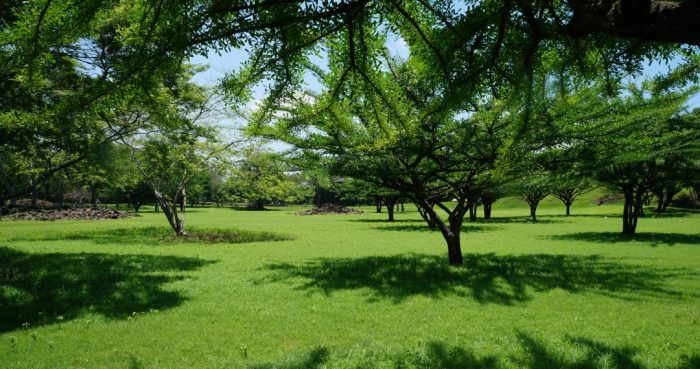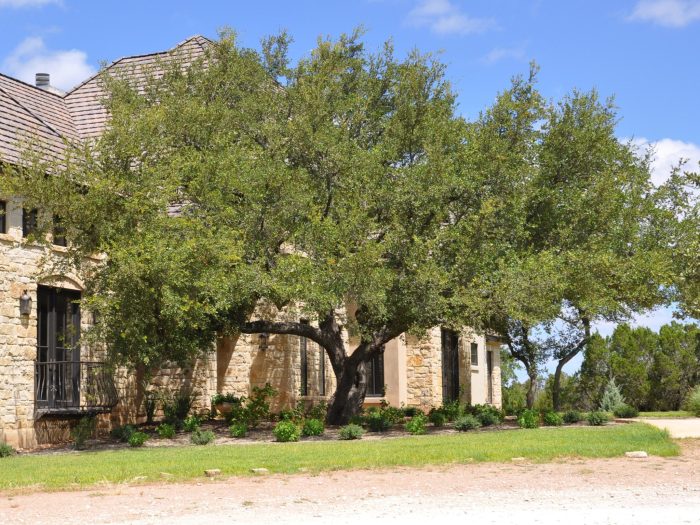Best Trees for Different Texas Regions

Trees to plant in texas – So, you want to plant some trees in Texas? Smart move! But with our diverse climate, choosing the right tree is like picking the perfect pair of boots – you wouldn’t wear cowboy boots to a formal ball, would you? (Unless you’re really committed to the look.) Let’s find the perfect arboreal companions for your Texas landscape.
North Texas Tree Selection
North Texas boasts a mix of conditions, from hot summers to chilly winters. Picking the right tree requires considering these factors to ensure your leafy friends thrive. Here’s a table to get you started:
| Tree Name | Region | Soil Type | Water Needs |
|---|---|---|---|
| Bur Oak | North Texas | Well-drained, slightly acidic | Moderate; drought-tolerant once established |
| Redbud | North Texas | Well-drained, slightly alkaline to neutral | Moderate; drought-tolerant once established |
| Lacebark Elm | North Texas | Well-drained, adaptable to various soil types | Moderate; drought-tolerant once established |
| Bald Cypress | North Texas (moist areas) | Moist, acidic to neutral | High; prefers consistently moist soil |
| Chinkapin Oak | North Texas | Well-drained, slightly acidic | Moderate; drought-tolerant once established |
West Texas Drought-Tolerant Trees
West Texas? Think “arid” and “sun-baked.” You need trees that can handle the heat like a seasoned desert tortoise. These champions of drought resistance are your best bets:
The Desert Willow, with its vibrant blooms and deep taproot, sips water sparingly. Its leaves are designed to minimize water loss. The Texas Ebony, a slow-growing beauty, has incredibly dense wood that helps it survive long dry spells. And the Yucca, though technically a plant, adds architectural interest and thrives in even the harshest conditions – it’s like the ultimate survivalist of the plant world.
So, you’re thinking about trees for your Texas yard, huh? Choosing the right ones is key, especially considering the climate. If you’re also planning on adding some tropical flair, maybe some banana trees? To get the best yield, you’ll need to know how far apart to plant them, check out this guide how far apart to plant banana trees for the deets.
Back to Texas trees though, remember to consider things like water needs and sun exposure for optimal growth!
Central Texas Native Tree Benefits
Planting native trees in Central Texas is like giving your ecosystem a high-five. It’s a win-win situation for both the environment and local wildlife.
Here’s why you should go native:
- Supports local wildlife: Native trees provide food and shelter for birds, insects, and other animals adapted to the region. Imagine a bustling ecosystem right in your backyard!
- Improved soil health: Native trees help prevent soil erosion and improve soil structure, leading to a healthier garden.
- Reduced water consumption: Once established, native trees are often more drought-tolerant than non-native species, saving you water in the long run. Think of it as a built-in water-saving system!
- Enhanced biodiversity: Native trees contribute to the overall biodiversity of the region, creating a more resilient and vibrant ecosystem.
East Texas Humid Climate Tree Selection
East Texas is a humid wonderland, but that humidity can bring its own set of challenges, like pesky insects and soggy soil. Choosing the right tree is crucial for avoiding potential problems.
Consider these factors when selecting trees for East Texas:
Look for trees with good resistance to common East Texas pests like aphids and spider mites. Also, ensure the tree’s root system can handle the potential for poorly drained soil, which is common in many parts of East Texas. Selecting trees that are well-suited to these conditions will help ensure their long-term health and vitality. Species like Pecan, Sweetgum, and various Oak varieties often perform well in this environment, but proper research is key to making the right choice for your specific location and soil type.
Trees for Specific Landscaping Needs: Trees To Plant In Texas

Choosing the right tree for your Texas landscape can be a wild ride! From battling scorching sun to weathering unpredictable storms, your tree needs to be a tough cookie. Let’s explore some options for specific landscaping needs, ensuring your green companions thrive.
Shade Trees: Size and Root Systems
Shade trees are the superheroes of the landscaping world, offering respite from the Texas heat. However, their size at maturity and root systems are crucial considerations. A majestic oak might seem perfect, but its sprawling roots could wreak havoc on your foundation, while a smaller tree might not provide enough shade.
Large shade trees like the Live Oak ( Quercus virginiana) offer incredible shade but require significant space due to their massive size and wide-reaching root systems. Planting one too close to your house is a recipe for foundation cracks! On the other hand, smaller shade trees like the Chinaberry ( Melia azedarach), while providing welcome shade, have less dramatic root systems and a more manageable mature size.
It’s a balancing act between shade and space!
Flowering Trees for Texas Gardens
Texas boasts a vibrant array of flowering trees, each with its own charm and quirks. Let’s compare three popular choices, keeping bloom time and maintenance in mind.
| Tree Name | Bloom Time | Flower Color | Maintenance Level |
|---|---|---|---|
| Crape Myrtle (Lagerstroemia indica) | Summer | Various (pink, purple, red, white) | Medium (pruning required) |
| Texas Redbud (Cercis canadensis var. texensis) | Spring | Deep Pink | Low |
| Mexican Plum (Prunus mexicana) | Early Spring | White | Low |
Fast-Growing Trees for Windbreaks
Texas wind can be a real force of nature, so a strong windbreak is essential in many areas. Fast-growing trees are your best bet for quickly establishing a protective barrier.
Consider these three options: Fast-growing trees like the Chinaberry ( Melia azedarach) are known for their rapid growth and tolerance of various conditions. However, remember that Chinaberry trees can become quite large. The Eastern Red Cedar ( Juniperus virginiana) is another good choice, offering excellent wind protection and adapting well to diverse Texas climates. Finally, the Arizona Cypress ( Cupressus arizonica) is a drought-tolerant option that provides dense screening.
Choosing the right species depends on your specific climate and desired windbreak density.
Small Trees for Urban Environments
Living in a city doesn’t mean sacrificing the beauty of trees. Many smaller trees thrive in urban settings, tolerating pollution and compacted soil.
The Japanese Maple ( Acer palmatum) is a classic choice, offering beautiful foliage and a relatively small mature size. It’s relatively tolerant of pollution, but prefers well-drained soil. The Chaste Tree ( Vitex agnus-castus) is another great option, known for its drought tolerance and ability to withstand urban conditions. Finally, the Redbud ( Cercis canadensis) varieties, particularly smaller cultivars, are perfect for smaller spaces and tolerate a fair amount of pollution and compacted soil.
Illustrative Examples of Texas Trees

So, you’re ready to plant some Texas trees, huh? Excellent choice! But before you grab your shovel, let’s get acquainted with some of the state’s most iconic arboreal residents. We’ll be taking a look at some visual characteristics – think of it as a tree-based “Where’s Waldo?” but instead of Waldo, it’s magnificent Texas flora.
Texas Live Oak, Trees to plant in texas
The Texas Live Oak (
Quercus virginiana*) is a majestic sight. Picture this
a broad, spreading crown, often wider than it is tall, creating a welcome shade canopy in the Texas heat. Its bark is dark, almost black, deeply furrowed and textured, like the weathered face of a seasoned cowboy. The leaves are small, leathery, and evergreen, a deep grayish-green, providing year-round visual interest. These oaks can reach impressive sizes, with mature specimens often exceeding 40 feet in height and boasting a spread of 80 feet or more.
Their growth habit is typically low and sprawling, creating that classic, picturesque, wide-spreading form so beloved in Texas landscapes. Imagine a giant, leafy umbrella providing welcome shade on a hot summer day.
Pecan Tree
Now, let’s talk Pecan trees (*Carya illinoinensis*). These aren’t just pretty faces; they’re also the source of delicious nuts! The bark of a mature pecan is deeply furrowed, resembling shaggy gray-brown armor. The leaves are alternate, pinnately compound, meaning they have several leaflets arranged along a central stem, creating a feathery appearance. These leaves turn a beautiful golden yellow in the fall before dropping.
Pecan trees can grow quite tall, reaching heights of 70 to 100 feet, with a broad, spreading crown that provides ample shade. The branching structure is strong and upright, providing a sturdy framework for the abundant nuts. And those nuts? Elongated, brown, and delicious, they’re a true Texas treasure. Harvest time is a delightful flurry of activity, and the sight of the laden branches is a feast for the eyes (and the stomach!).
Texas Redbud
Finally, let’s admire the Texas Redbud (*Cercis canadensis var. texensis*). This is a showstopper in spring! Before the leaves even emerge, the branches explode with vibrant pink-purple flowers, covering the tree in a breathtaking display of color. The flowers are pea-like in shape, adding to their charm. The leaves are heart-shaped, simple, and alternate, a pleasing contrast to the bright flowers.
Texas Redbuds are smaller trees, typically reaching heights of 20 to 30 feet, with a rounded or vase-shaped form. Their growth habit is often multi-stemmed, creating a graceful and delicate appearance. The flowering period typically occurs in early spring, lasting for several weeks, transforming the landscape into a vibrant spectacle. Think of it as nature’s own burst of confetti, but way more beautiful.
Questions Often Asked
What’s the best time of year to plant trees in Texas?
Generally, fall and early spring are ideal, avoiding extreme summer heat and winter freezes.
How often should I water a newly planted tree?
Deep, infrequent watering is best. Check soil moisture regularly and water deeply when the top few inches are dry.
What are some common tree pests in Texas?
Common pests vary by region, but include aphids, spider mites, and various borers. Regular inspection and appropriate treatment are crucial.
Where can I find certified arborists in my area?
Check with your local Texas A&M AgriLife Extension office or the International Society of Arboriculture for referrals.
